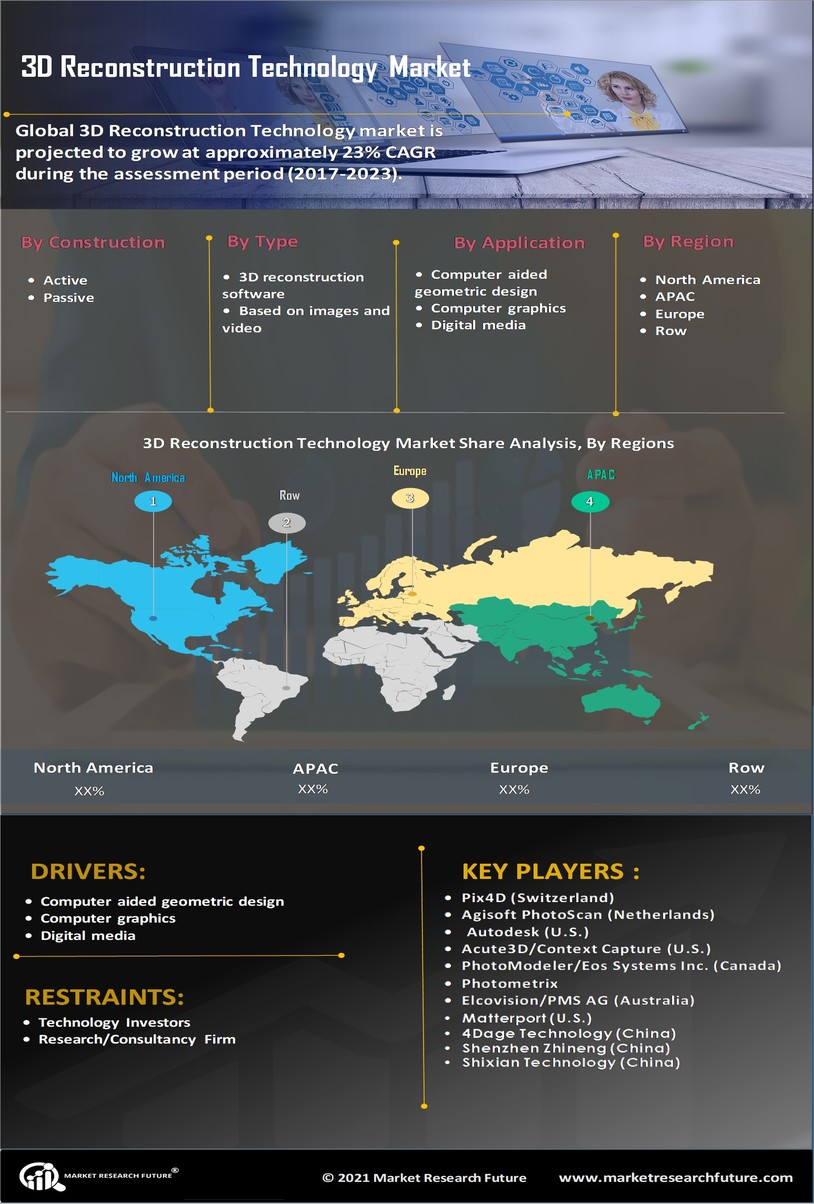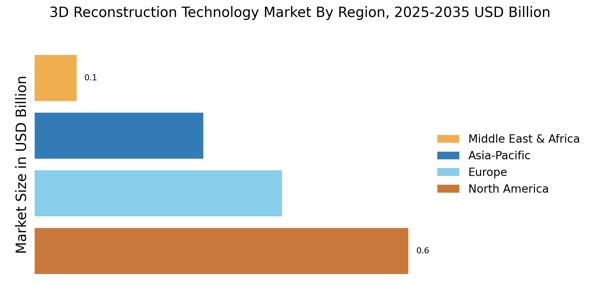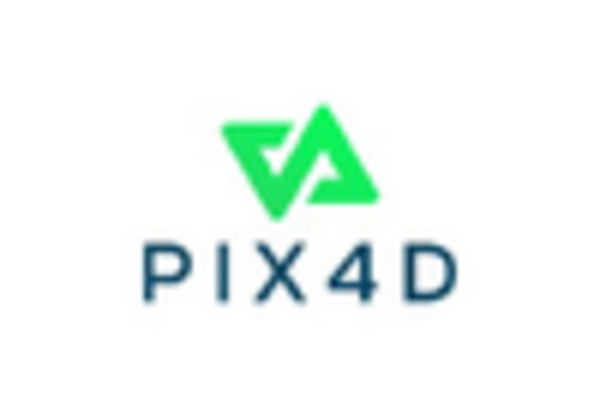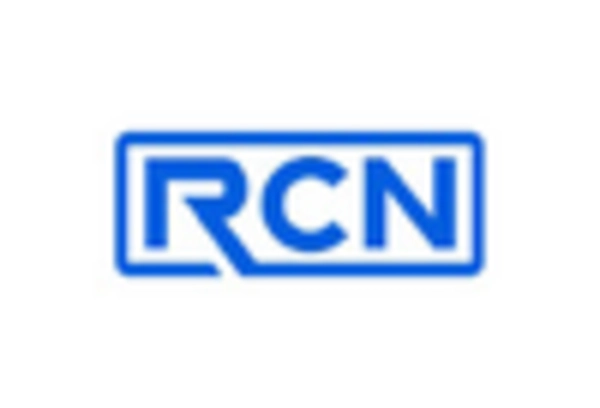Growing Applications in Healthcare
The healthcare sector's increasing reliance on 3D reconstruction technologies is emerging as a significant driver for the 3D Reconstruction Technology Market. Applications such as surgical planning, medical imaging, and prosthetics design are becoming more prevalent, with the market for medical imaging projected to reach over 50 billion dollars by 2026. The ability to create 3D models from medical scans allows for improved patient outcomes and personalized treatment plans. Furthermore, the integration of 3D printing with reconstruction technologies is likely to enhance the production of customized medical devices. As healthcare providers seek innovative solutions to improve patient care, the demand for 3D reconstruction technologies is expected to rise, contributing to market growth.
Advancements in Imaging Technologies
Technological advancements in imaging techniques, such as LiDAR and photogrammetry, are significantly influencing the 3D Reconstruction Technology Market. These innovations enable the capture of high-resolution data, which is crucial for accurate 3D modeling. For instance, LiDAR technology has been adopted in various applications, including urban planning and environmental monitoring, leading to a projected market growth of around 20% in the next few years. The ability to create detailed and precise 3D models from real-world data enhances the capabilities of industries such as construction and heritage preservation. As imaging technologies continue to evolve, they are expected to drive further adoption of 3D reconstruction solutions, thereby expanding the market.
Increased Investment in Smart Cities
The global trend towards smart city development is significantly impacting the 3D Reconstruction Technology Market. Governments and urban planners are increasingly investing in technologies that facilitate the creation of smart infrastructures, which often rely on 3D reconstruction for planning and management. The smart city market is projected to grow substantially, with investments expected to exceed 1 trillion dollars by 2025. This growth is driven by the need for efficient urban planning, resource management, and enhanced public services. 3D reconstruction technologies play a crucial role in visualizing urban environments, enabling stakeholders to make informed decisions. As cities continue to evolve into smart ecosystems, the demand for 3D reconstruction solutions is likely to increase.
Increased Demand for 3D Visualization
The demand for 3D visualization across various sectors appears to be a primary driver for the 3D Reconstruction Technology Market. Industries such as architecture, engineering, and entertainment are increasingly adopting 3D visualization techniques to enhance design processes and improve user experiences. According to recent data, the architectural visualization segment is projected to grow at a compound annual growth rate of approximately 15% over the next five years. This trend indicates a robust appetite for advanced visualization tools, which are essential for creating immersive environments and realistic representations. As businesses recognize the value of 3D visualization in decision-making and marketing, the 3D Reconstruction Technology Market is likely to experience substantial growth.
Surge in Demand for Gaming and Entertainment
The gaming and entertainment industries are witnessing a surge in demand for immersive experiences, which is driving the 3D Reconstruction Technology Market. The rise of virtual reality (VR) and augmented reality (AR) applications necessitates the use of advanced 3D reconstruction techniques to create engaging environments. Market analysis indicates that the gaming sector alone is expected to grow at a rate of 12% annually, fueled by the increasing popularity of VR and AR games. This trend suggests that developers are investing heavily in 3D reconstruction technologies to enhance gameplay and user interaction. As the entertainment landscape evolves, the need for sophisticated 3D models and environments will likely propel the market forward.


















Leave a Comment